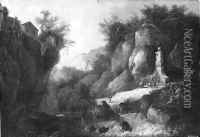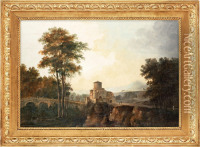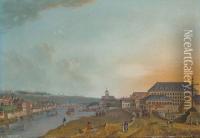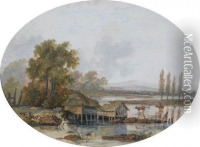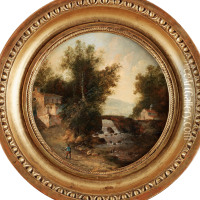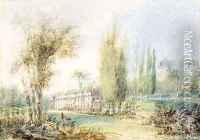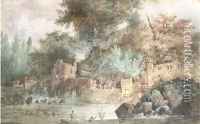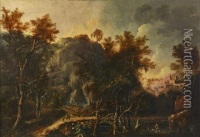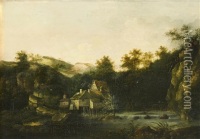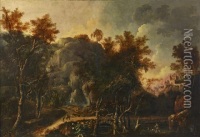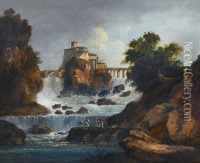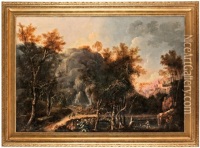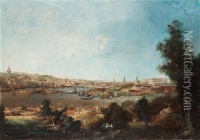Louis Belanger Paintings
Louis Belanger was a French painter, born in 1756 in Paris, France. He grew up in an era marked by the Rococo style, which profoundly influenced his early works. However, as he matured as an artist, Belanger's style evolved, incorporating elements of Neoclassicism, a trend that was gaining popularity towards the end of the 18th century. Despite being less known than his contemporaries, Belanger's contribution to French art, particularly in landscape and decorative painting, is noteworthy.
Belanger's education and early career were deeply embedded in the artistic environment of Paris. He studied under notable artists of the time, which helped him develop a keen eye for detail and a versatile approach to painting. His talent was recognized early on, and he received commissions from several high-profile clients, including members of the French nobility and the royal family. This patronage allowed him to establish himself as a reputable artist in the competitive Parisian art scene.
During the French Revolution and the subsequent Napoleonic era, Belanger's career faced challenges, as did the careers of many artists of the time. The political and social upheavals affected the patronage and the art market. Despite these challenges, Belanger managed to continue his work, adapting to the changing times by accepting commissions that aligned with the ideological shifts of the period.
Belanger's landscapes are particularly notable for their detailed depiction of natural scenery, a testament to his keen observation and appreciation of nature. These works not only reflect the stylistic transition from Rococo to Neoclassicism but also serve as valuable historical documents of the French countryside and its estates, many of which have since changed or no longer exist.
After a long and varied career, Louis Belanger passed away in 1816. Although he may not be as widely recognized as some of his contemporaries, his work holds a significant place in the history of French art. Belanger's paintings are preserved in several prestigious museums and collections, where they continue to be appreciated for their beauty and historical value.
